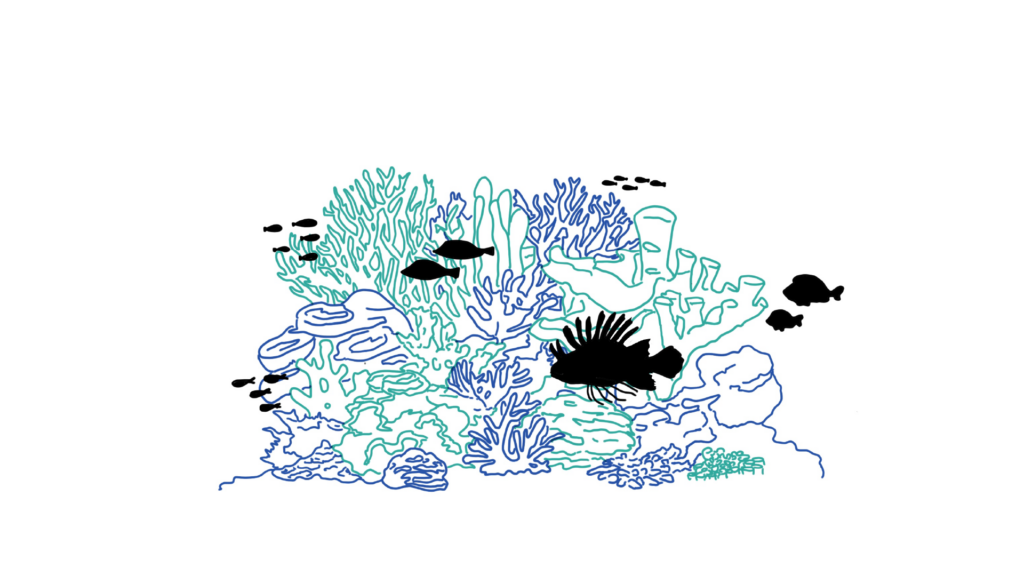
In the article ‘Coral Reefs of the Land’ Madhusudan Katti suggests we reimagine our cities as coral reefs. Coral reefs correlate with tropical rainforests concerning their biological productivity. These dynamic marine metropolises accommodate diverse species. Conversely, our cities offer limited spaces for species to build habitats. Could cities embrace coexistence and invite more species to thrive within human-made ecosystems? Could membranes that separate buildings from their surroundings act as mediators instead?
With these questions in mind, the research focused on the intersection of biology, technology and the built environment. It will investigate bioreceptive membranes, or poikilohydric walls termed “architectural barks” by Marcos Cruz.
Context
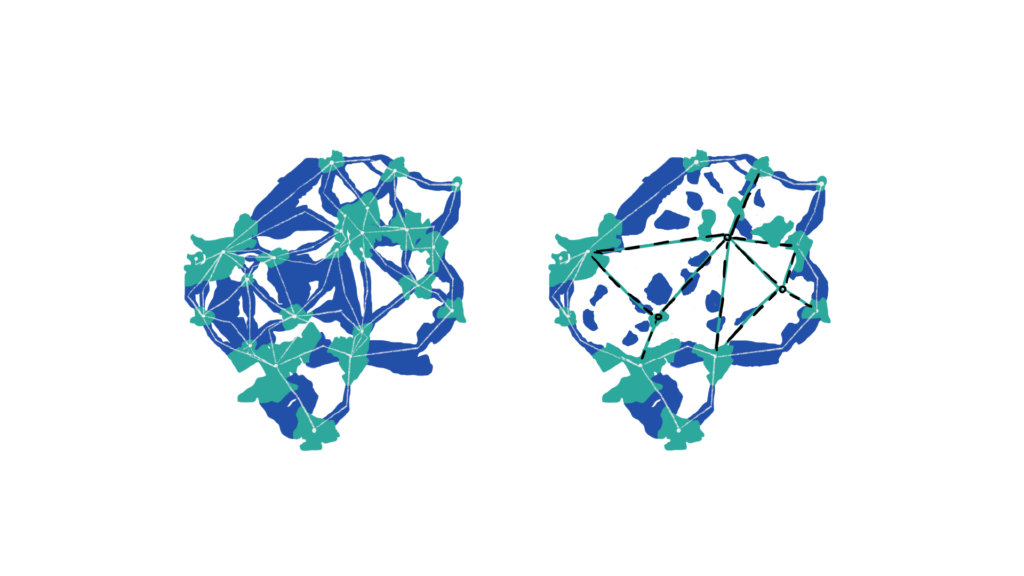
Urban sprawl is a major driver of the loss of biodiversity across the world (IPBES, 2019). Moreover, urbanization creates physical and chemical barriers that can prevent the movement and dispersion of species, limiting their ability to find food, shelter, and breeding partners (IUCN, 2023). Diverse urban ecosystems are more resilient to environmental changes, including extreme weather events and climate change impacts. Biodiversity can provide a number of benefits to urban residents, such as reducing flood risk, controlling pest populations, pollinating local flora, and contributing to mental health and psychological well-being.
Pedersen Zari suggests that nature is dynamic while architecture is static and the two systems will remain in conflict unless attention is paid to zones and layers. Lundholm and Richardson have argued for greater consideration of artificial urban habitats such as walls and pavement as ‘analogue’ habitats that can support species from comparable natural habitats. Facades offer micro- and meso-concavities in which new ‘urban habitat templates’ (Lundholm 2006) can emerge.
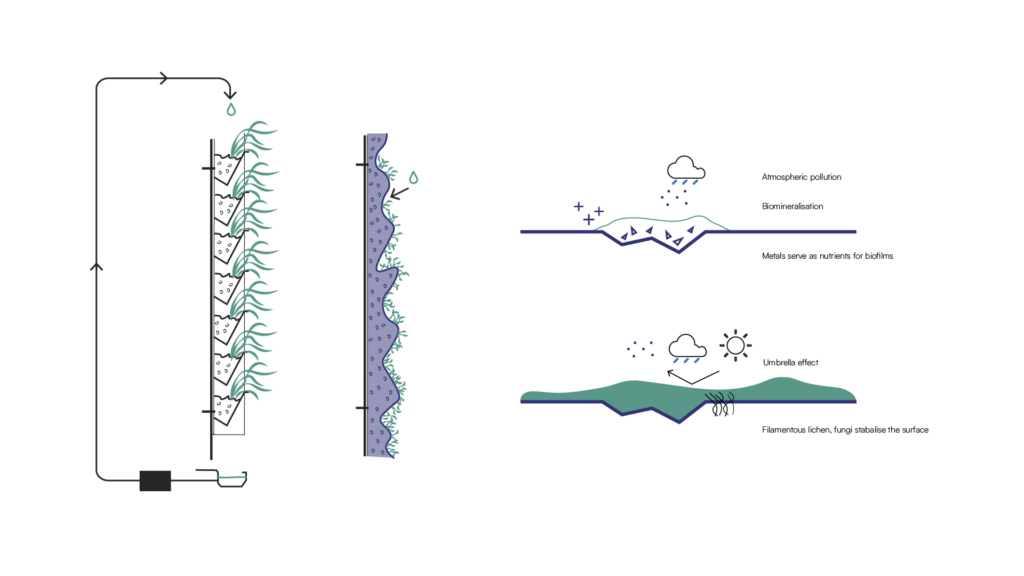
Unlike vertical green walls, bioreceptive facades require minimal technical assistance as poikilohydric organisms survive dehydrated conditions. They support the colonization of lichens, moss and epiphytes. Marcos Cruz compares them to tree barks that provide micro-ecosystems. Similar to green walls, bioreceptive walls store carbon and remove pollutants from the air to provide improved air quality. They can passively cool and reduce heat island effect. They can also help in enhancing biodiversity by inviting insects that can control pets or by providing food or shelter to other animals and birds. Furthermore, surface-dwelling organisms can physically protect the underlying surface from abrasion, act as a thermal blanket and mediate moisture regimes. (H. A. Viles et al. 2021)
Thesis Question
Urbanization has led to the creation of physical and chemical barriers that have pushed nature into fragmented isolated pockets. This disconnection has hindered the biological activity of other species in urban environments. One such barrier but also a potential point of intervention is architectural surfaces. While nature-based solutions focus on improving green and blue cover through urban design, fewer studies involve buildings to optimize urban biodiversity. A promising research topic addressing this gap is the use of bioreceptive surfaces. Accordingly, this thesis will look into how bioreceptive surfaces could enhance urban biodiversity by aiding ecological connectivity.
Methodology
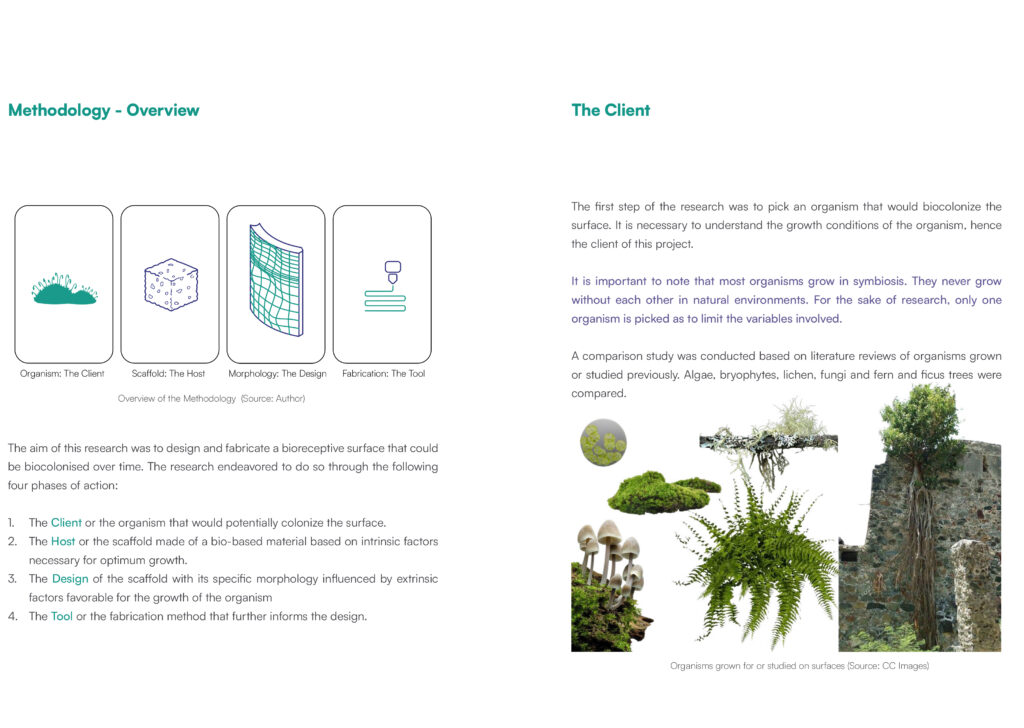
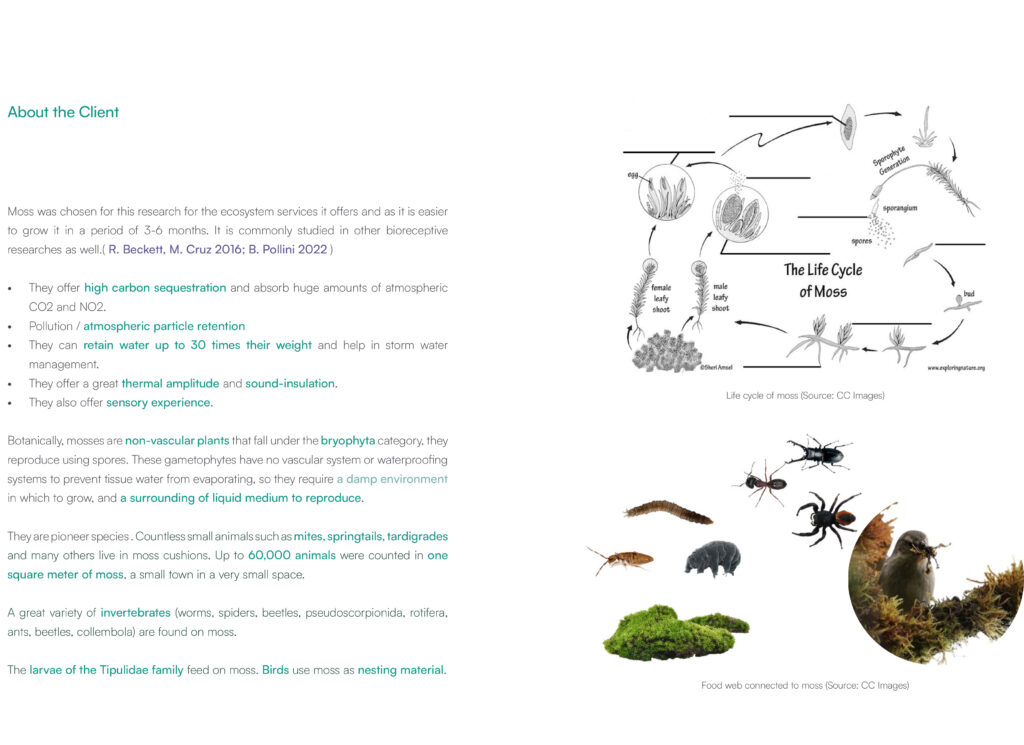
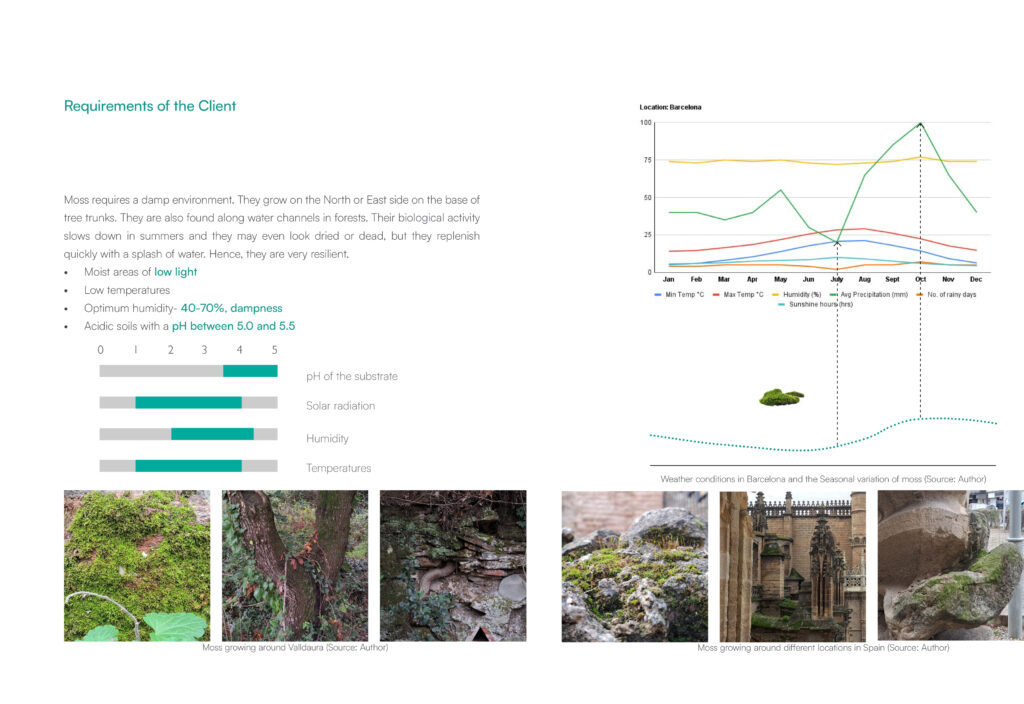
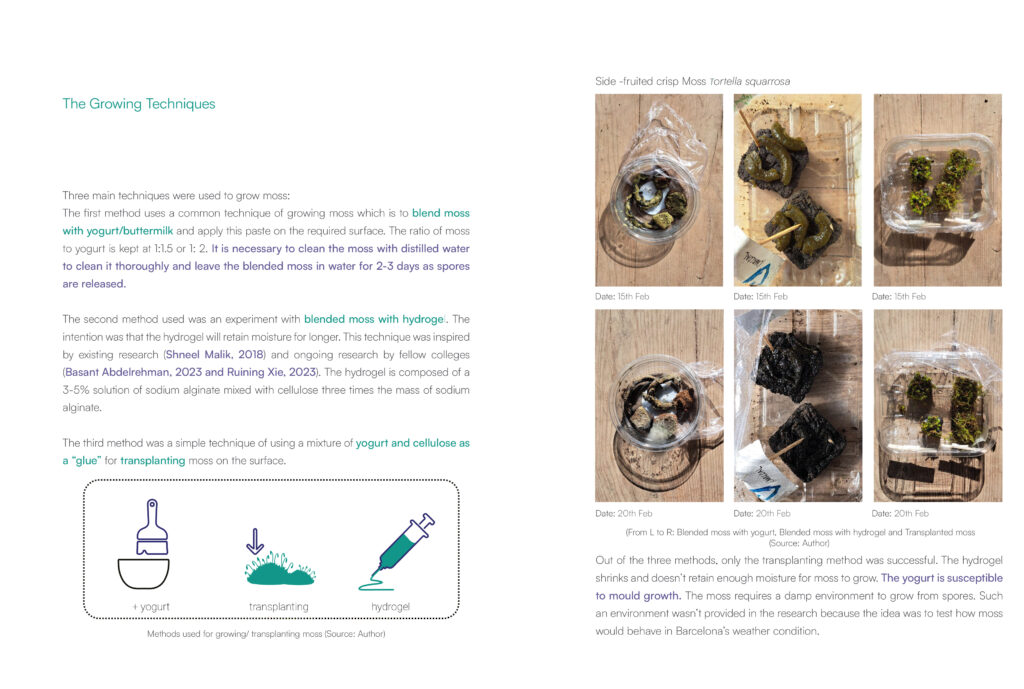
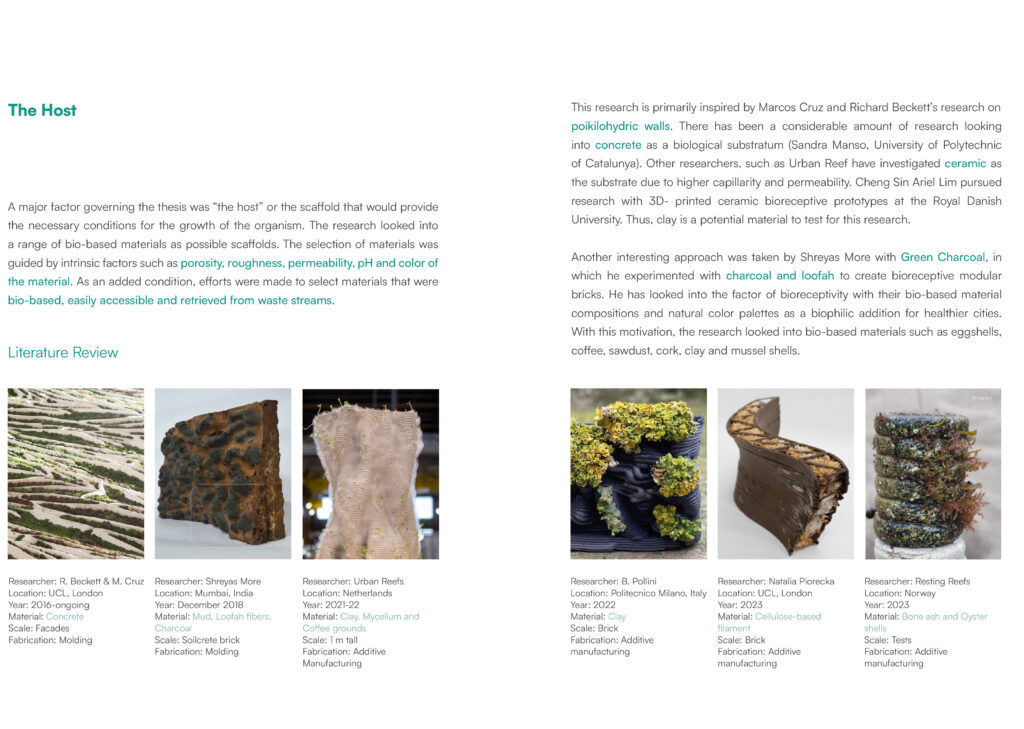
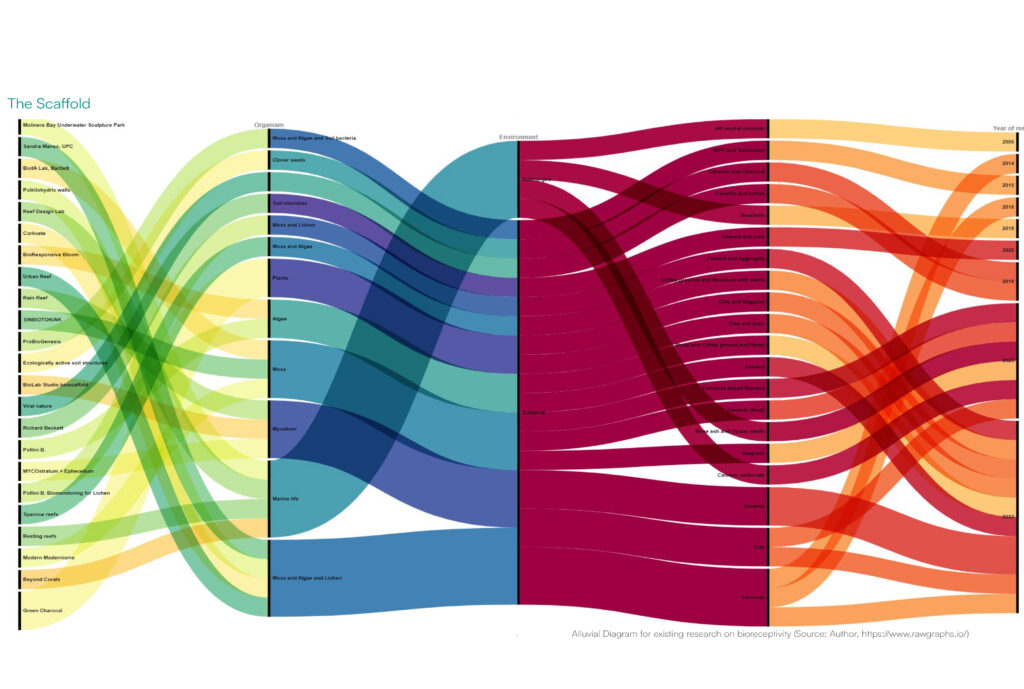
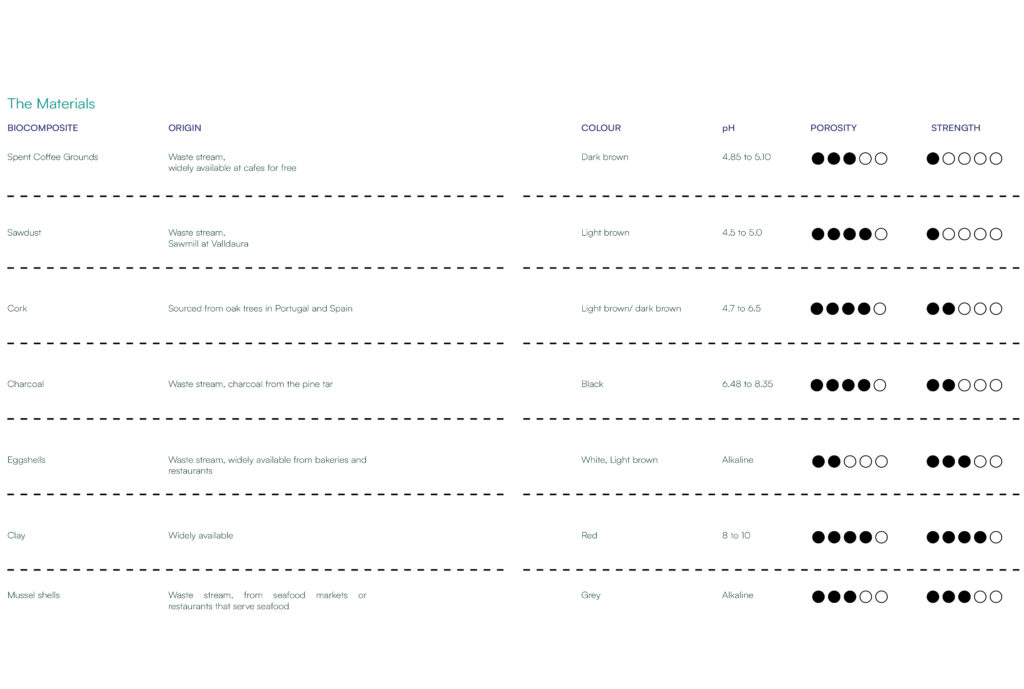
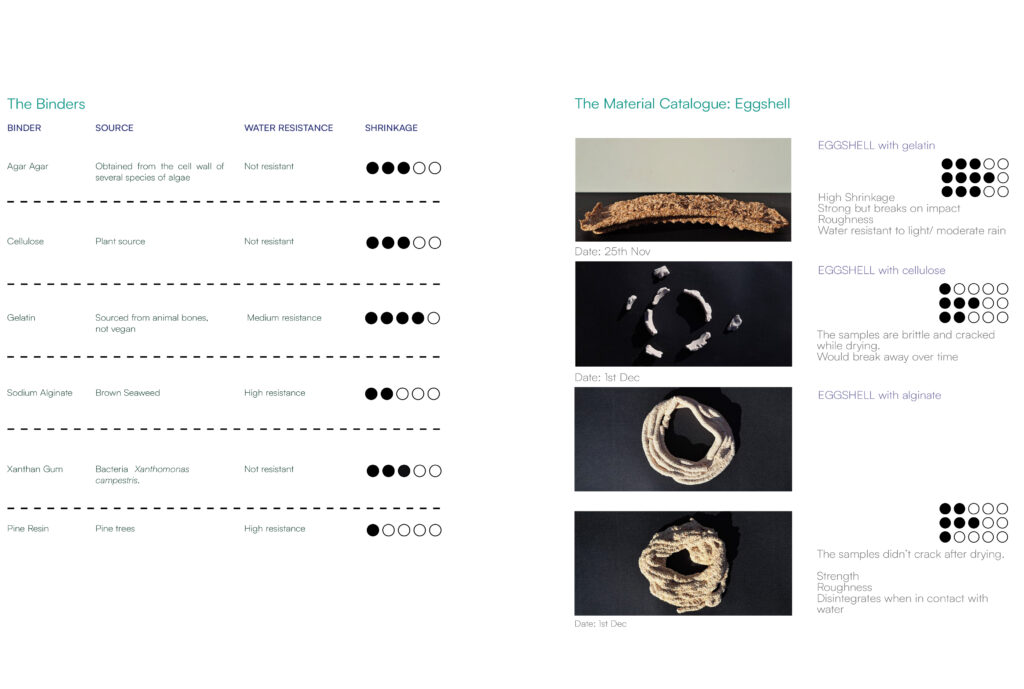
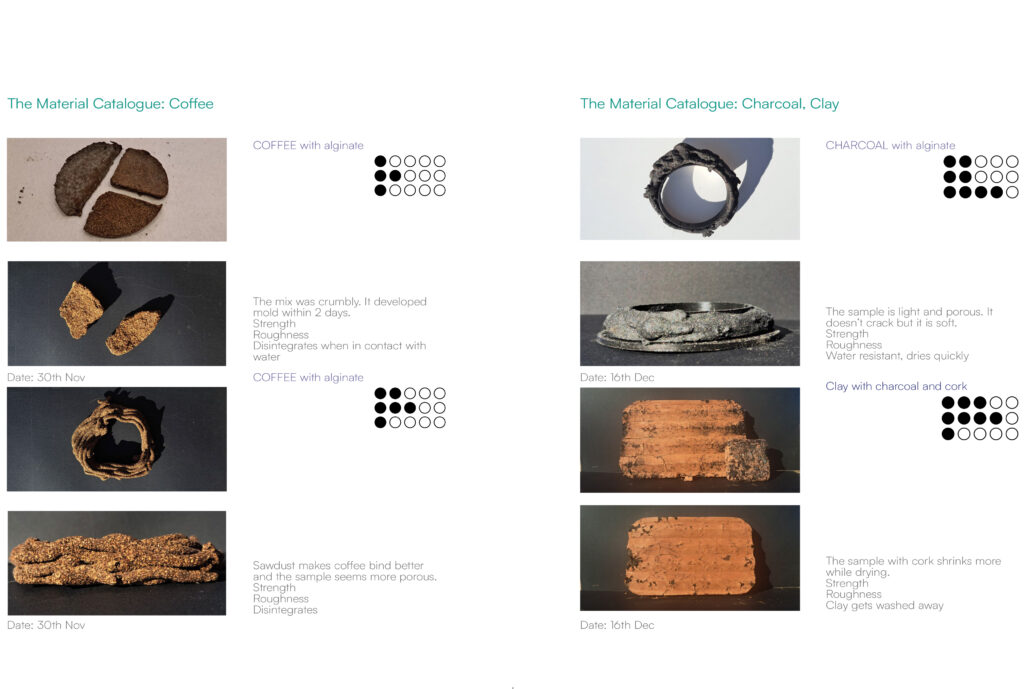
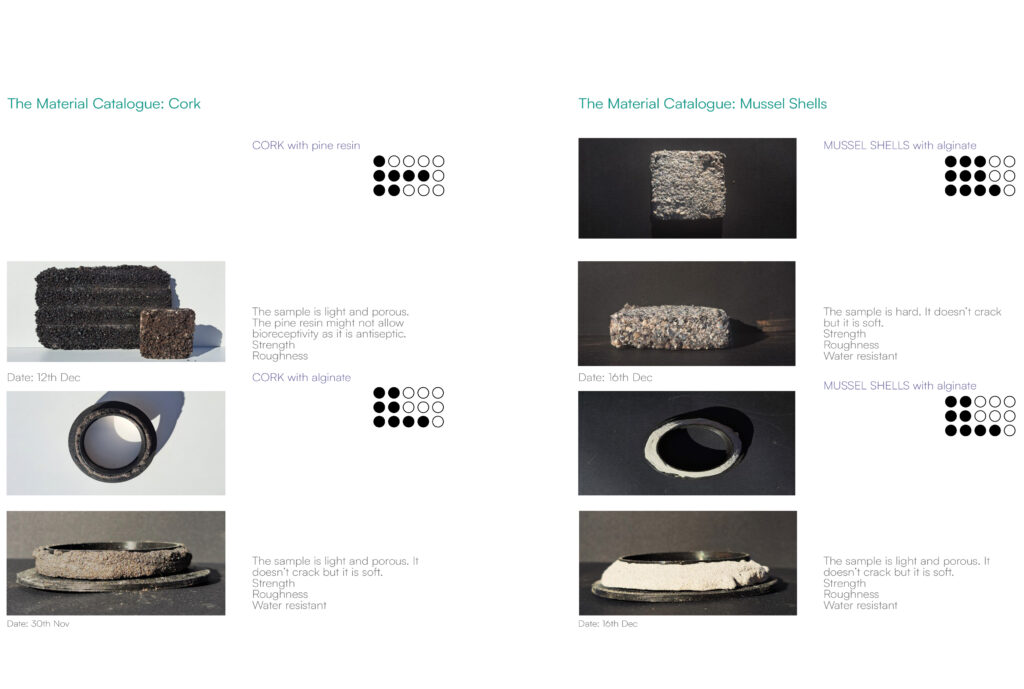
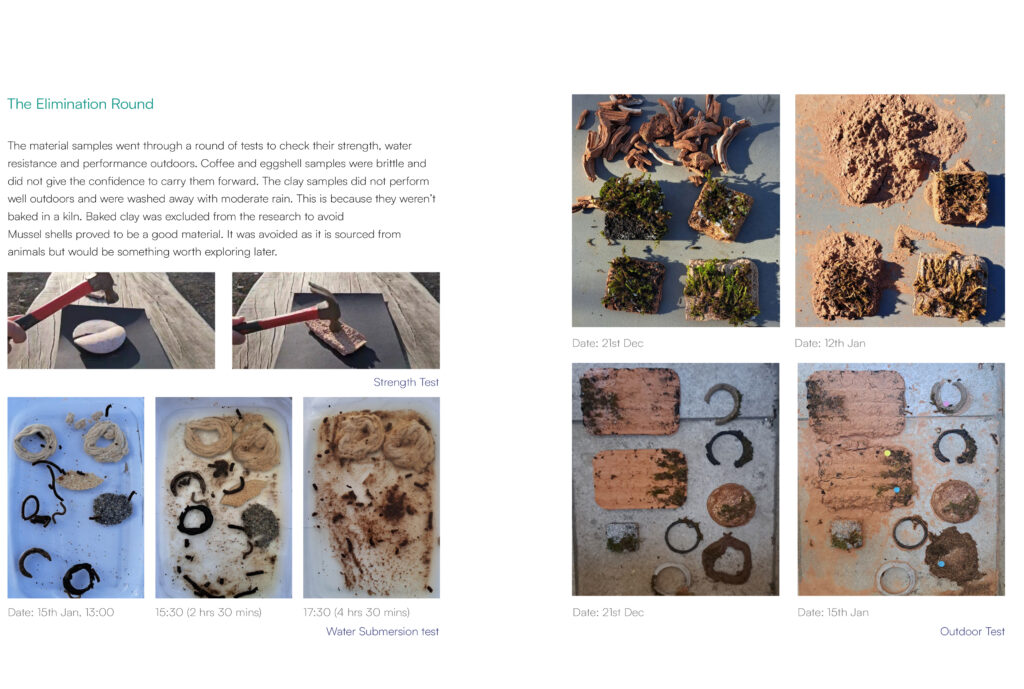
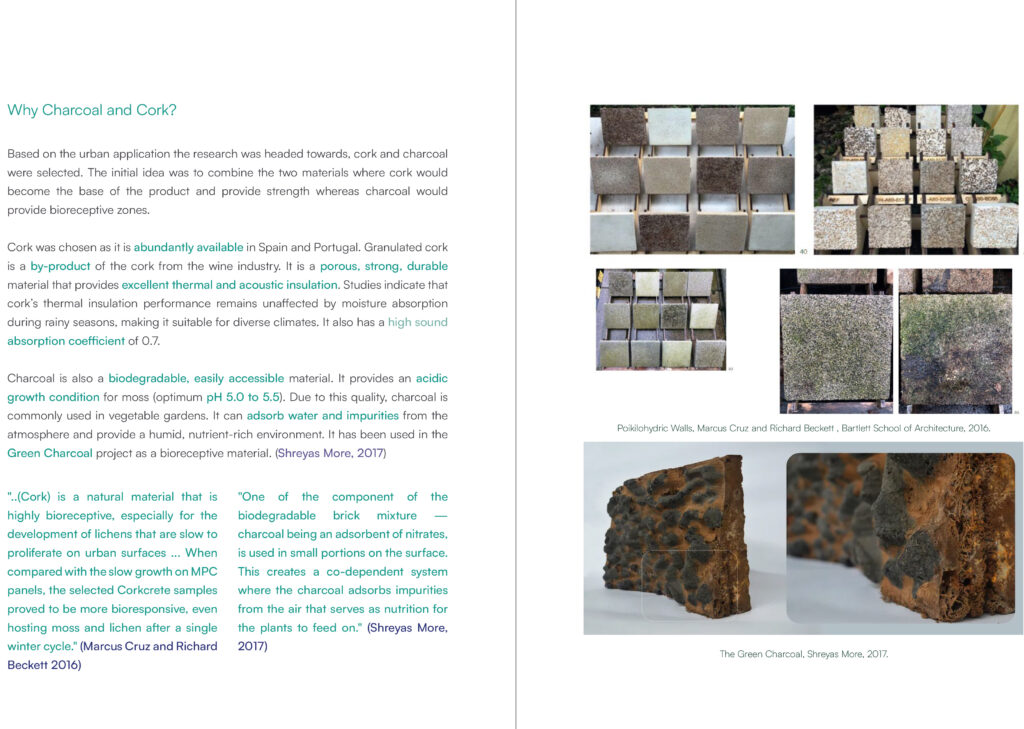
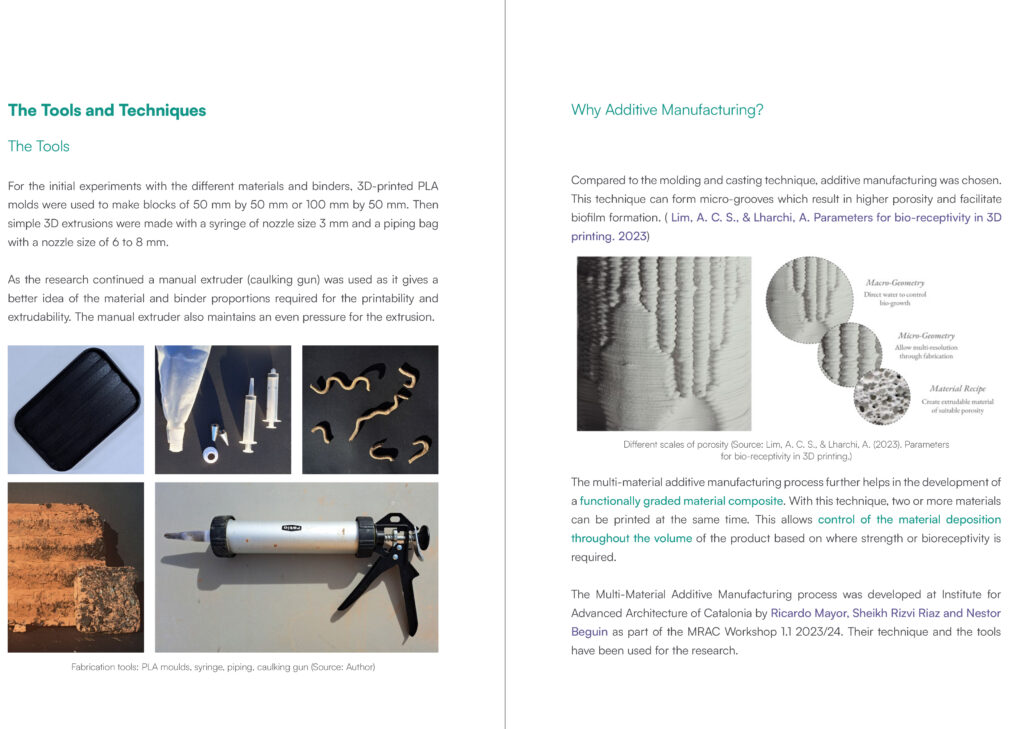
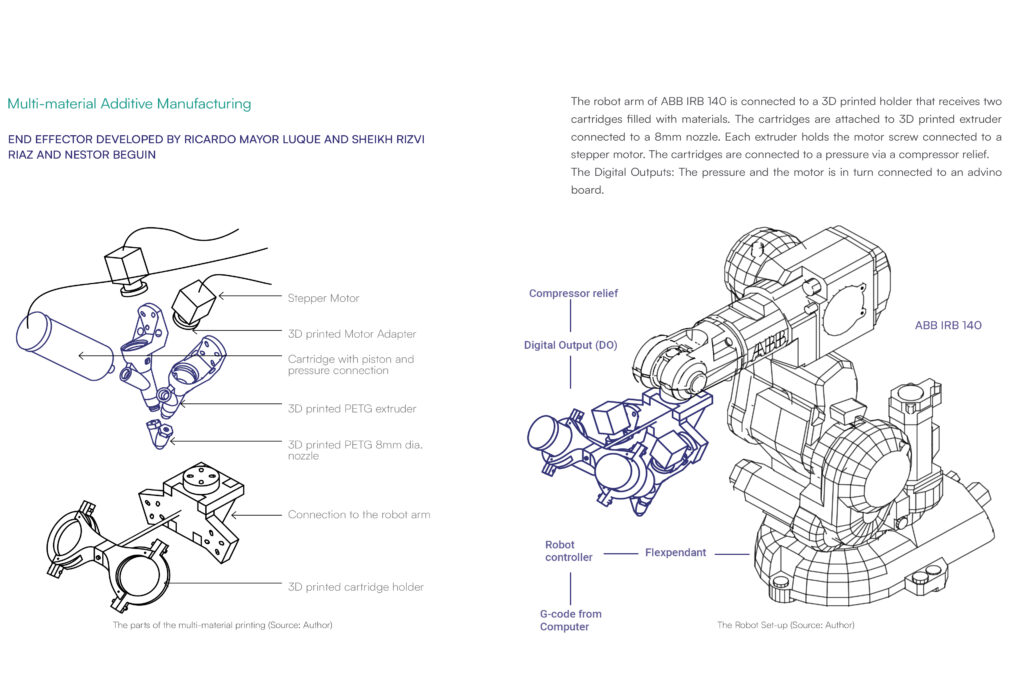
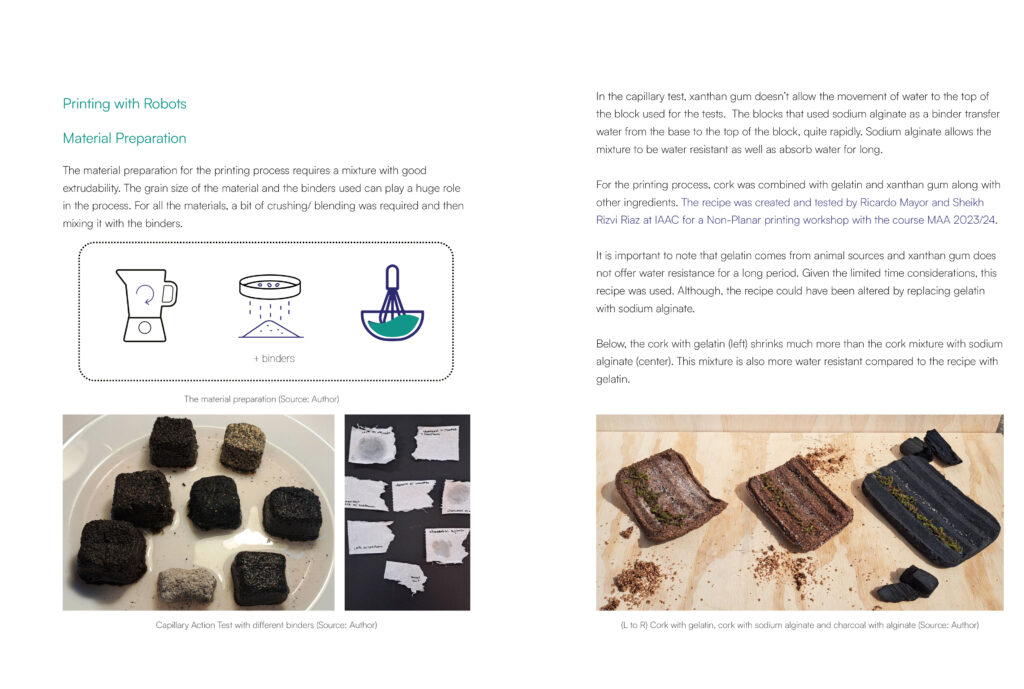
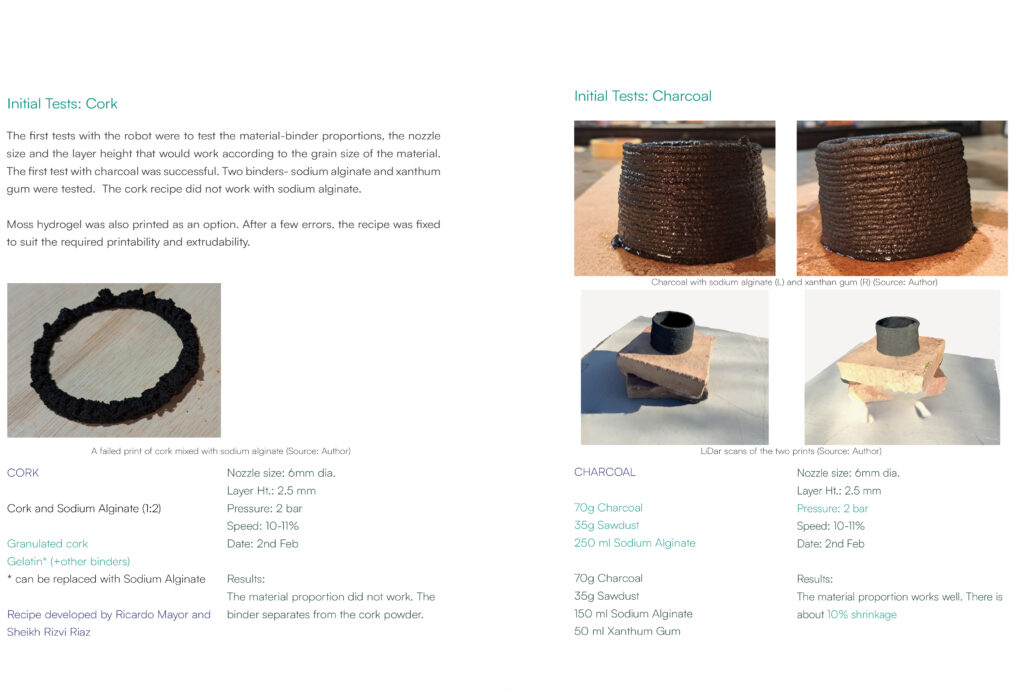
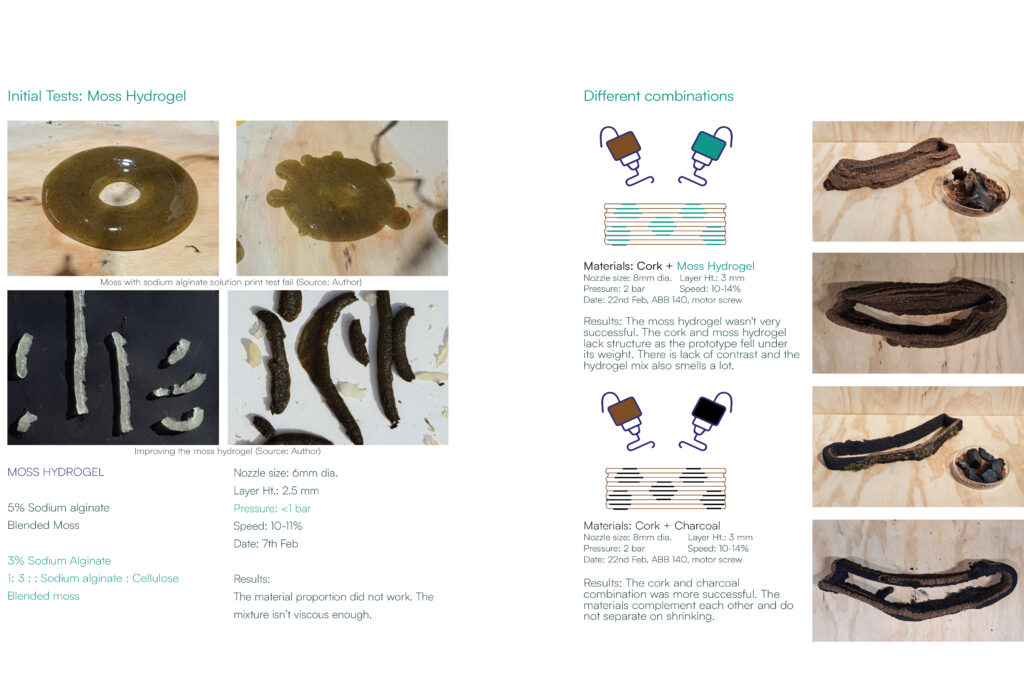
Design and Fabrication of the Prototype
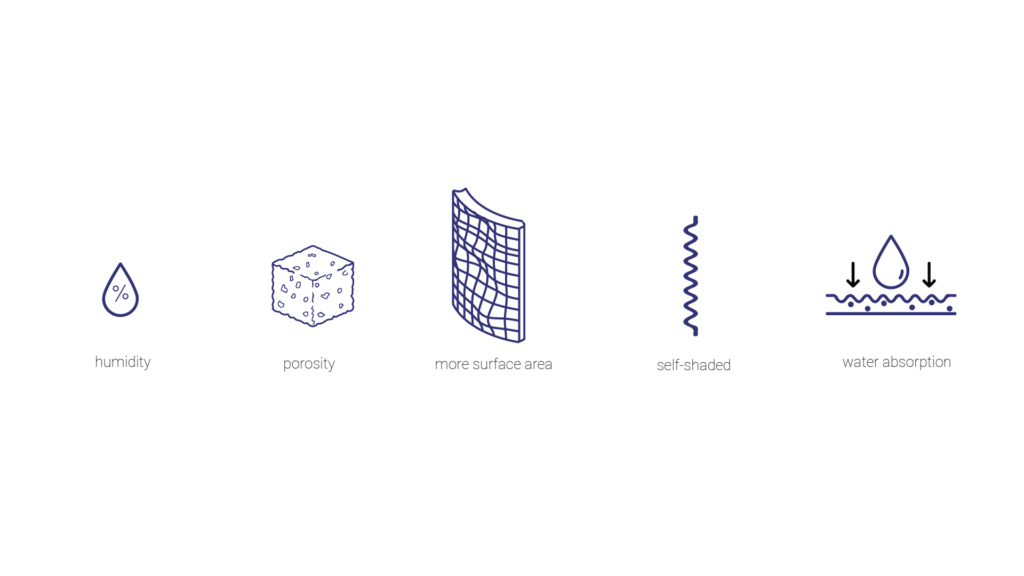
The design was guided by extrinsic factors such as humidity, porosity, surface area, shade and water retention of the surface. The microclimate also plays an important role in the design. As moss requires a shaded and humid environment, surface morphologies with nooks and crannies were explored for the design.
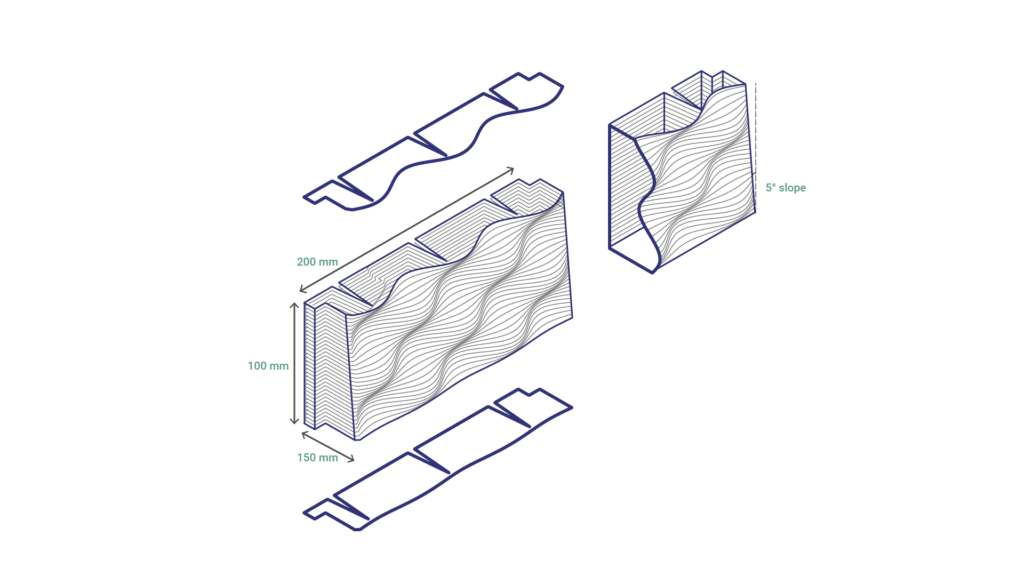
The prototype is designed as a replacement for cladding panels that could provide thermal and acoustic buffers. It is designed as a modular interlocking panel of the standard size of 1000 mm by 500 mm. For the prototype, a scale of 1:5 was chosen with the dimensions of 200 mm by 100 mm. The chosen geometry (a sine wave modulation) has crests and troughs that create self-shaded areas and provide subtle water channels for water to flow. The surface morphology also provides twice the surface area compared to a flat surface. A slope of 5° is provided to slow down the rate of flow of water on the surface. The Honeybee plugin in Grasshopper was used to calculate the required thickness of the cork panel. The data shows that a thicker panel performs better. Hence, 100 mm was chosen as the thickness of the panel.
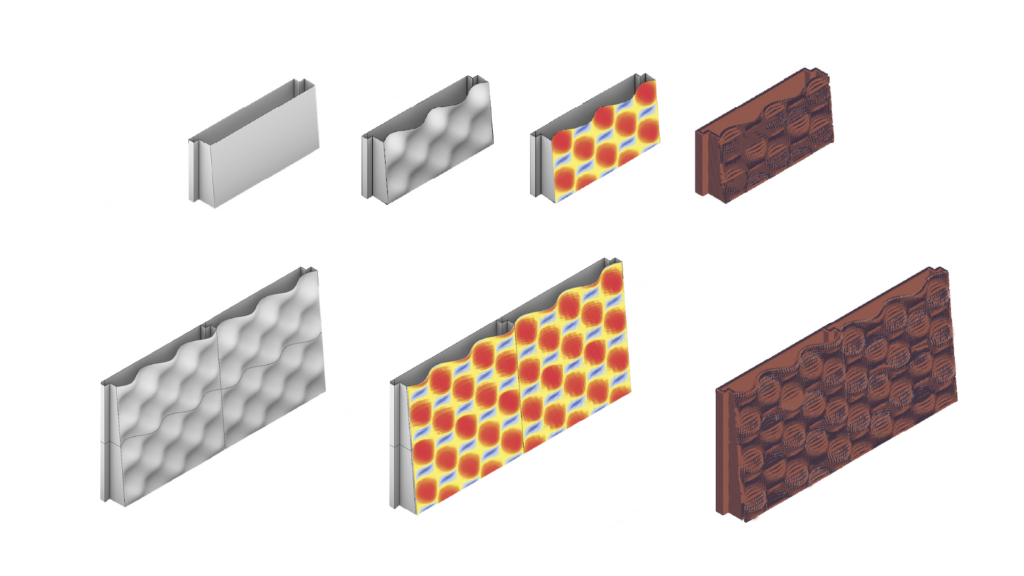
The Ladybug tool on Rhino-Grasshopper quantifies the amount of solar energy falling on a given geometry. It is used for conducting a radiation analysis of the chosen surface. For the prototype, the varying solar exposure on the geometry is used as a logic to deposit the two materials in different areas. The solar exposed regions are to be printed in cork and the shaded water channels are to be printed with charcoal. The prototype is proposed to be installed on retrofit buildings in Barcelona. Although, the Mediterranean sun would be harsh on the moss. It is necessary to find shaded spots for the moss on the South facade. Hence, the radiation analysis is calculated for the south facade.
The Results
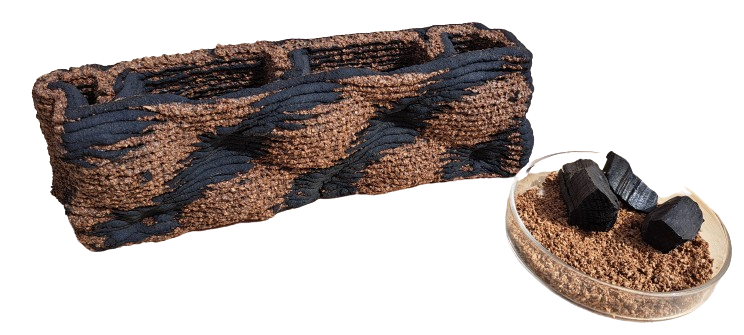
For the cork, granulated cork of 2-3 mm was mixed with certain binders such as gelatin and xanthan gum in specific proportions to receive the appropriate extrudability and printability. (The mixture shrinks by 15%.) For the charcoal, the charcoal powder was mixed with sawdust and sodium alginate. ( The mixture shrinks by 10%.) For the printing process, a nozzle of 8mm and a layer height of 4 cm was considered suitable according to the grain size of the cork granules. The pressure for both materials was kept at 2 bar and the print speed was between 10 to 15%.
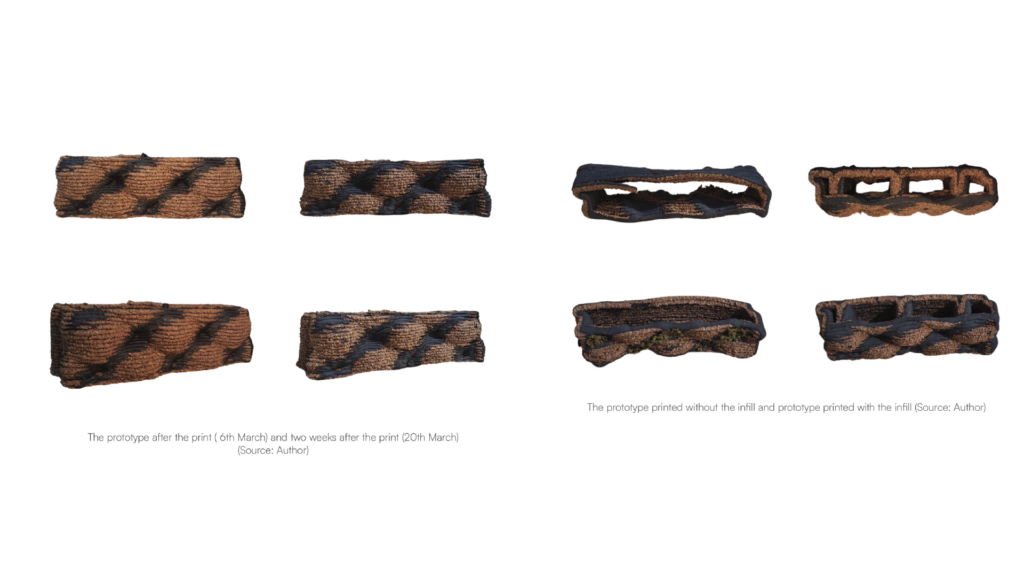
The material mixtures complement each other well and did not separate during the drying process. The printed result exhibits an interesting contrast between the brown cork and black charcoal. The prototype module has shrunk by 10% over two weeks. The infill included in the design helps to reduce the shrinkage and also maintains the shape and stability of the module.
Urban Application
The Barcelona City Council and the Barcelona Housing Consortium (CHB) offer renovation grants for refurbishment. The purpose of these funds is to reduce the energy consumption of private buildings and homes that run on non-renewable energy sources. This initiative could improve energy efficiency, boost the economy and deliver better living standards for Europeans. It was estimated by Barcelona City Council’s Environmental Department in 2010 that the potential available space for green roofs was 1,764 hectares within the city. There’s about 4,34,072 square metre area available for green walls. These walls could potentially be used for bioreceptive facades.
This prototype could be scaled up and printed in 1:1 scale as a cladding panel in retrofit buildings. The government also focuses on zero-carbon retrofits and this cork-charcoal insulation panel could cater to that existing demand.
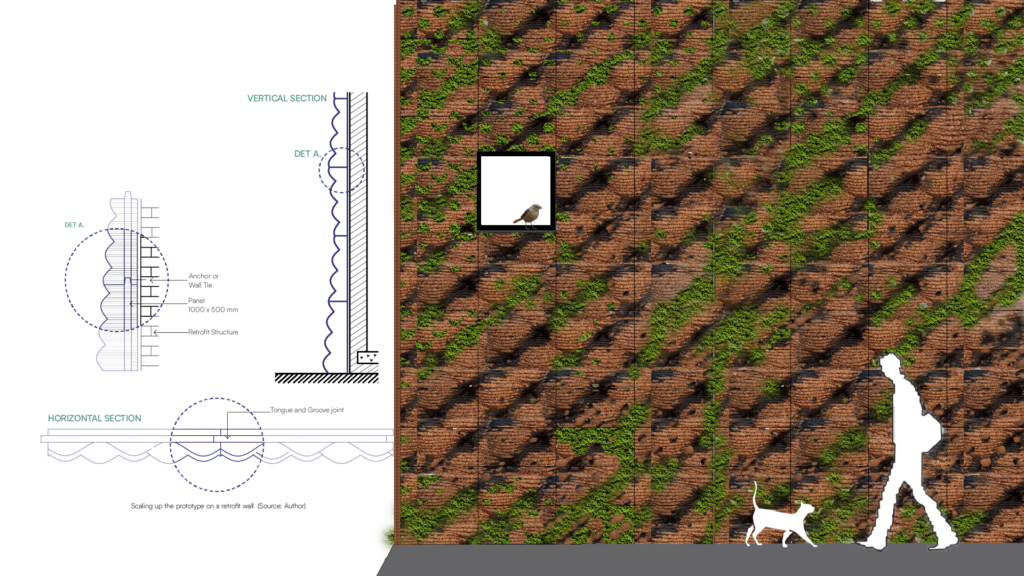
Next Steps
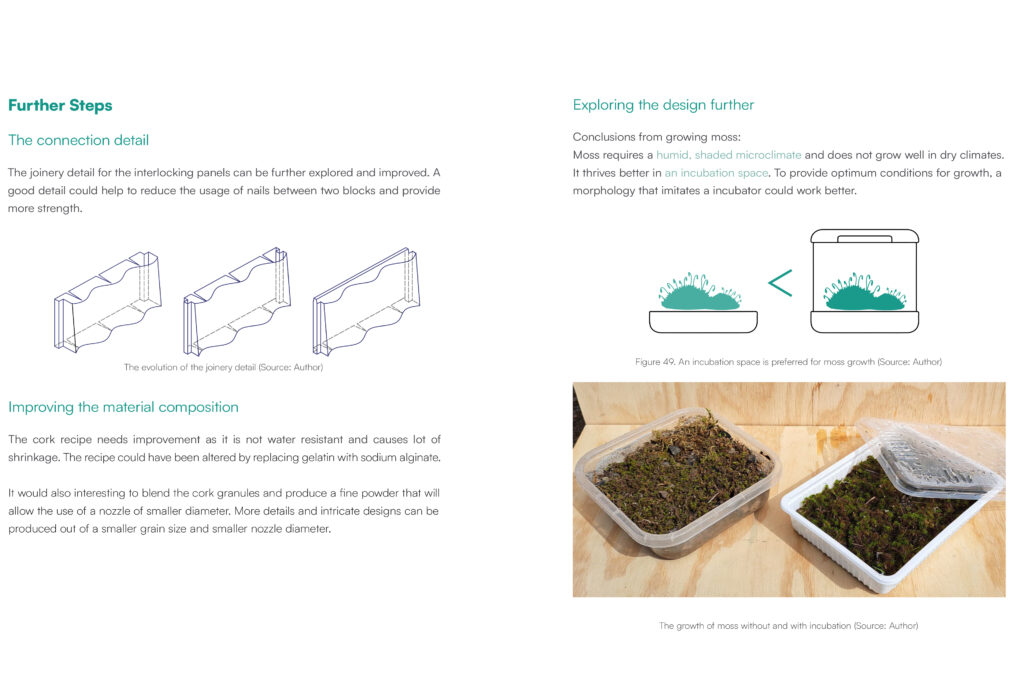
The experiments with growing moss from spores wasn’t successful and should be focused on in the next steps of the research. It would also be interesting to allow multiple species to colonize the surface rather than isolating one species. It is necessary to study the growth of moss overtime. Although the growing methods failed, the research has been able to identify the key factors in the growth of moss and the design that could work for it.
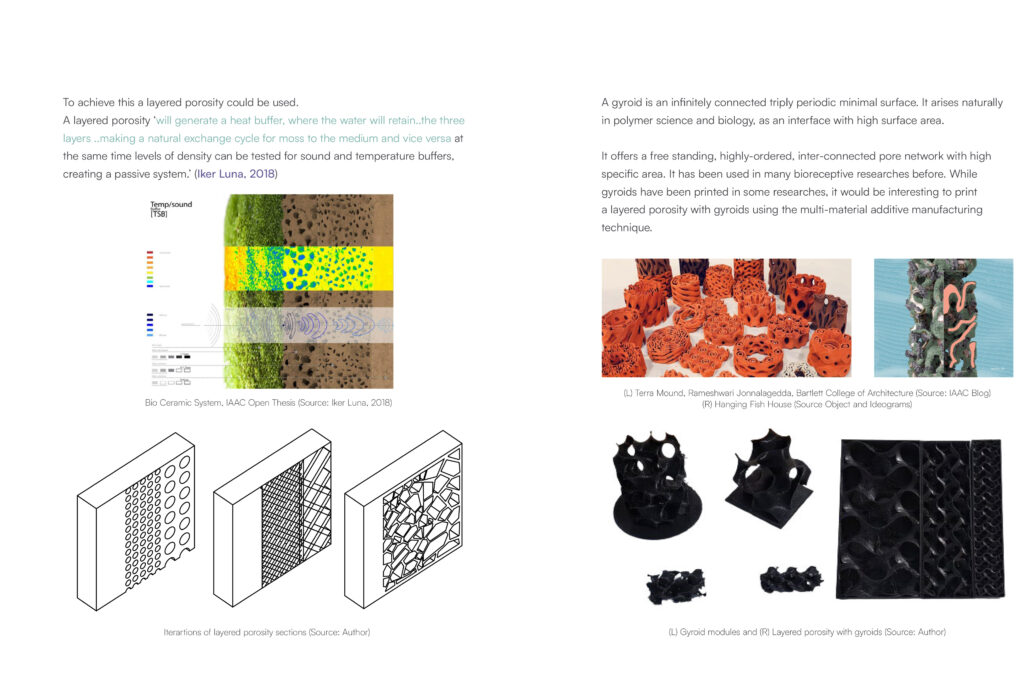
The next steps of the thesis would look into fabricating a FGM composite with layered porosity. While gyroids have been printed in some researches, it would be interesting to print a layered porosity with gyroids using the multi-material additive manufacturing technique. It would also be interesting to explore FGMs of other materials for other urban applications such as urban furniture, daily household objects, sidewalks and public plazas.
Conclusions
The research has been successful in suggesting that bioreceptive surfaces could help in aiding ecological connectivity and enhancing urban biodiversity. It would be important to study means of incorporating bioreceptive façades in cities and the drawbacks of installing them.
As estimated by Barcelona City Council’s Environmental Department that the potential available space for green walls was about 4,34,072 square meter, this opens an important research question of if these walls could potentially be used for bioreceptive facades as well. Studies need to be conducted in order to analyses vertical surfaces in urban areas to calculate the scope of bioreceptivity.

